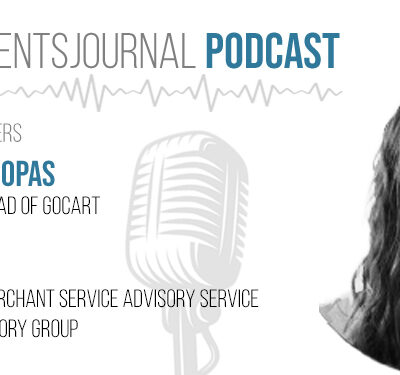The digital economy enables businesses to reach customers across national borders more easily than ever before. One study found that two-thirds of eCommerce firms sell beyond their home markets, deriving 31% of their revenue from cross-border sales; other data showed that more than half of online shoppers made at least one purchase from an overseas merchant in 2020.
Global cross-border business-to-consumer (B2C) eCommerce had already reached $440 billion prior to the pandemic, according to UNCTAD’s latest comprehensive estimate, and industry research indicates this grew 24% in 2020.
However, the payments side of international business is more problematic. Merchants, marketplaces and platforms face a host of challenges in dealing with cross-border payments and, unlike many other aspects of digital business, this area is becoming more complicated. The busy payment market landscape sees a constant shuffle of new payment and risk services, and governments frequently change regulations to keep pace with digitization and the influx of online transactions.
Payment reliability and costs form central parts of the equation as well, and these complexities make efficient payment orchestration especially critical in the cross-border context. The stakes are highest for large companies, which often serve customers in dozens of markets, each with its own regulatory, banking and payment gateway dynamics.
Total cross-border eCommerce will hit $2.8 trillion in 2022, according to industry research, with big firms accounting for the lion’s share. The following Deep Dive examines how payment orchestration platforms (POPs) can help large businesses manage cross-border payments more efficiently, and how this can save time and money compared to international merchants’ attempts to build their own solutions.
The Efficiency Challenges for Cross-border Payments
Recent PYMNTS data identified several key pain points for U.S. and U.K. companies engaged in cross-border business, which accounted for an average of 26% of their sales. Sixty percent of firms feared payment fraud when making outbound payments, and 56% worried about payment fraud in general. Their other top concerns included payment data theft (52%), long processing times (45%) — businesses waited 55% longer on average to receive cross-border payments than domestic ones — and foreign exchange costs (42%). 
Sixty-seven percent of the largest businesses surveyed — those generating over $500 million in annual revenue — said that they need help from third parties to manage cross-border payments innovation. Payment orchestration solutions can address all of the above issues.
A quality POP connects to multiple payment providers, routes transactions, boosts payment acceptance rates and provides fraud detection and security, all of which takes place through a single, easy-to-manage layer. A survey found that cross-border shoppers were much more likely to buy from merchants that offer the payment types they want to use, an issue that POPs can solve at the systemwide level.
Two other problems facing big companies in cross-border eCommerce are transaction failure and cart abandonment, both of which POPs can mitigate. A recent survey found that transaction failures cost businesses nearly $120 billion a year globally, and these are more likely to occur with cross-border transfers than domestic ones. Large businesses feel the pain most: 80% of companies with over 20,000 daily payment failures said this caused them to lose customers. Another study found that consumers abandoned 81% of their online shopping carts in 2020, and extra costs ranked as the number one reason why.
POPs Compared to DIY Approaches
Payment orchestration clearly can help large companies dealing with customers in markets around the world manage payments more conveniently and efficiently. The question then becomes: Build or buy? The complexities and challenges involved in managing a complex payment system suggest that a do-it-yourself approach may prove time-consuming and expensive. Companies that go this route could also miss out on efficient transaction routing, reconciliation and payment data analytics — benefits POPs offer that even a well-designed DIY system cannot provide.
The first key area in which POPs improve cross-border payment efficiency is eliminating the need to implement a new application programming interface (API) each time a merchant wants to connect to a local payment provider or gateway for a targeted market. Even very large companies with sophisticated IT teams must devote substantial time and energy to build the connections on their own, and they will still need to monitor and update their DIY systems constantly as payment service providers (PSPs) and local gateways change their protocols.
The more payment connections an international merchant has, the harder it becomes to efficiently manage incoming cross-border transactions. Payment routing, one of the core POP features, directs transactions through the most beneficial payment provider in the respective region. This results in significantly lower payment costs and higher acceptance rates.
Another way POPs can boost payment acceptance rates is through transaction retry. This feature is specifically developed for declined transactions that happen either for technical reasons such as payment provider downtime or due to insufficient funds in a customer’s account. The declined transaction will be repeated within an established time frame until it ultimately goes through, resulting in both increased conversion rates and greater customer satisfaction.
POPs create value for large companies doing cross-border business beyond streamlining payments and minimizing the related costs and efforts. They offer data analytics capabilities that large businesses can leverage to identify growth opportunities and areas in which they can increase efficiency or reduce costs. In addition, reconciliation helps merchants funnel their payment reports from different providers in different formats into one concise document, increasing operational efficiency.
POPs also give their clients access to a wealth of knowledge from payment experts. Companies dealing with the increasingly complex world of cross-border payments should carefully consider how third-party solutions could ease the payment orchestration process, both immediately and in the long term.







